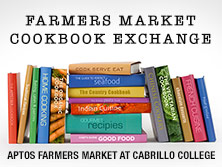Whether you call it “stock” or the trendier term “bone broth,” healthy and flavorful soups begin with a nutrient and mineral-rich base. Bone-based stocks provide calcium, magnesium, silicon, sulfur, phosphorus, and other trace minerals. You can make stock with leftover bones from dinner or purchase bony parts of chicken, turkey, beef, or even fish.
Cool weather is the perfect time to simmer a big pot of stock for hearty soups, gravies, sauces, and side dishes. Homemade stock is simple to prepare and is the secret to creating soups with real depth of flavor—something commercial versions just can’t match. In addition to fresh vegetables, stock is a resourceful way to use less-than-perfect produce or trimmings. Potato or carrot peels, mushroom stems, parsley stems, onion skins, green onion tops, or the last few cloves of garlic all work well. Avoid strong-tasting vegetables such as Brussels sprouts, broccoli, or cauliflower, which can overpower the flavor. Use whole spices and herbs like peppercorns and bay leaves—they strain out more easily than powdered seasonings. And don’t forget to save Parmesan or Pecorino rinds; they add a wonderful umami note.
Save chicken and turkey carcasses, bones, and drippings in the freezer for making poultry stock. Bony parts such as backs, wing tips, or necks are ideal and often inexpensive. For deeper flavor, season and roast the poultry parts on a sheet pan at 400°F for about 45 minutes before adding them to the pot.
For beef stock, look for meaty, good-quality bones from pastured cattle. Roasting the bones beforehand enhances flavor, and leftover holiday prime rib bones are excellent additions. Ham bones are also worth saving—they add a delicious smoky richness to lentil or split pea soups when combined with chicken stock.
Vegetable stock benefits greatly from roasting the vegetables first. Rough-chop your veggies, spread them on a rimmed baking sheet, drizzle with olive oil, and season with salt and pepper. Roast at 400°F until they caramelize along the edges. Adding a whole roasted head of garlic makes the flavor even better.
Stocks can be lightly salted or left unsalted, depending on preference. Many cooks hold off on seasoning until the final dish to better control the flavor.
Choose a tall, narrow stockpot to slow evaporation. Cover the bones and vegetables with cold, fresh water and bring to a gentle simmer. Poultry and meat stocks should cook for several hours, while vegetable stocks are done in about an hour.
When finished, cool the pot quickly by placing it in a sink filled with ice water. Stir occasionally to release heat, then strain the liquid and pour it into storage containers such as Mason jars. Stock will keep in the refrigerator for up to three days or in the freezer* for up to three months. Don’t worry about removing the fat right away—once cooled, it solidifies on top and is easy to lift off.
Try our favorite stocks: Best Roasted Vegetable Stock, Rich Chicken Stock, Hearty Beef Stock, Corn Stock
*If you plan to freeze the stock, be sure to leave enough head space at the top of the container to allow for expansion.
RECIPES: Split Pea Soup, French Onion Soup, Clam Chowder, Tortilla Soup, Asian Corn and Crab Bisque, Artichoke Sourdough Bisque, Classic Leek Potato Soup, Winter Squash Soup with Gruyere Croutons, Spicy Lentil Soup, Cabbage Soup, Roasted Butternut Squash Soup, Cream of Mushroom Soup, Creamy Roasted Cauliflower Soup, Sweet Potato and Kabocha Squash Soup
For the full list of soups, click here.



























